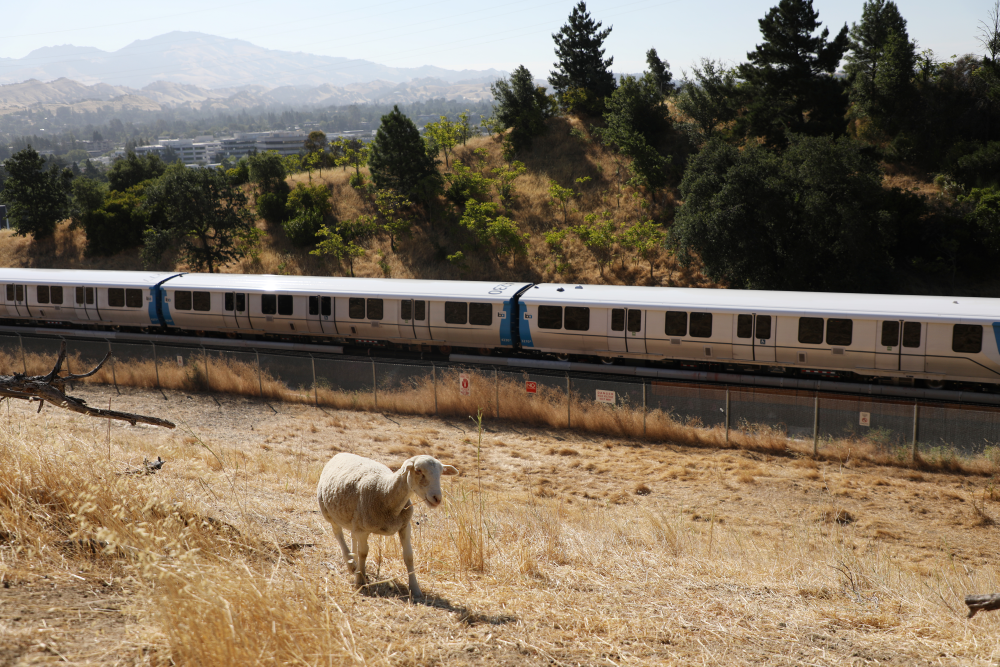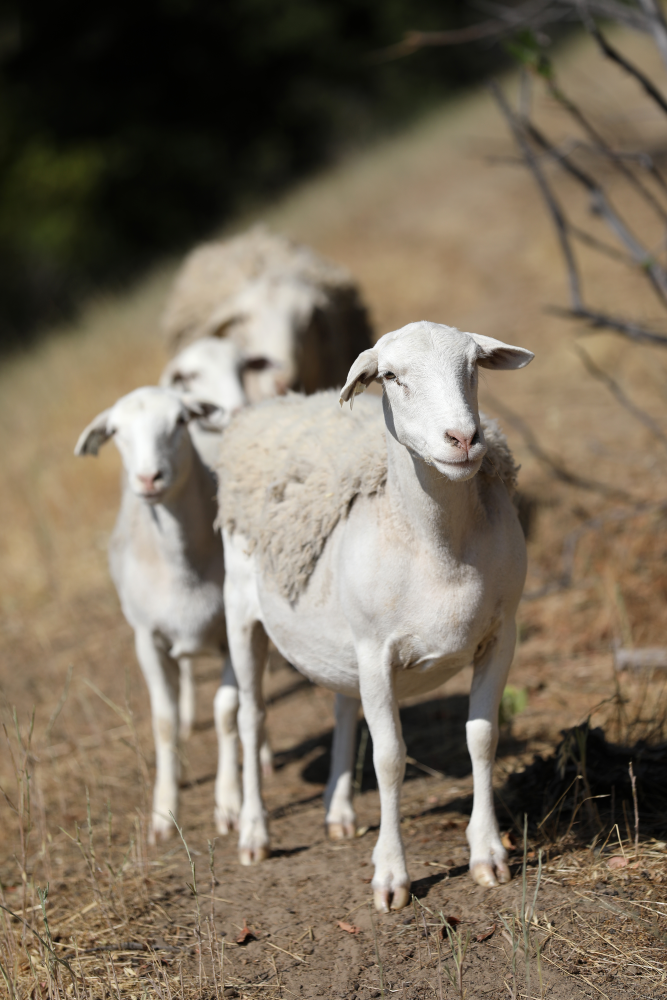Meet the sheep: BART welcomes a new animal to its fire mitigation toolkit

For the past two years, BART’s grazing goats have munched away at dried grasses around BART property. It’s a winning deal for the bleaters and for BART: the goats want to eat, and BART wants to sustainably mitigate fire hazards around its property. And the public love them, too; earlier this year, BART unveiled a horned anime mascot inspired by the caprine.
But this year, the goats are gone. Fret not, though, as there’s another photogenic nibbler in town. BART has added a new animal to its fire mitigation arsenal: self-shearing sheep.
Sheep and goats belong to the same subfamily, Caprinae, and they both like to eat. Sheep, however, prefer grazing grasses and short roughage, while goats gravitate toward taller woody plants. It's beneficial to rotate the animals every few years, said Mike Canaday, owner of the Coalinga-based Living Systems Land Management, from which BART contracts its fire-mitigating grazers.
“BART has been using goats for a while now, meaning there’s more fine grasses and less brush now,” Canaday said. “The sheep graze the grasses, while the goats go for the coarser brittle.”
Josh Soltero, a Fence and Irrigation Technician at BART who supports the grazing project, has noticed some key personality differences in his time working with the animals.

“The sheep look like fluffy goats,” he said. “But the goats are a little friendlier. They’ll come up to you and feel you out. The sheep are more standoffish.”
Soltero has also observed that the sheep are just as efficient in grazing dry, fire-starting vegetation as their goat brethren. And this year, BART has more grazers than ever before – approximately 500. The original BART herd started with just 100 goats.
BART has employed animals to mitigate fire hazards for the past few years. Previously, staff used heavy machinery and equipment to remove the dried grasses. The machinery was loud and sometimes disruptive to neighboring areas.
“Using heavy machinery poses a high risk of fire, too,” Soltero said. “We always carried backpacks of water in case something flared up.”
The grazing animals not only reach areas that humans cannot easily access, but they don’t make noise (besides the occasional bleat or “bah”), and they emit far less pollutants than gasoline-powered equipment. Not to mention, their efficiency “probably cuts the cost of fire mitigation in half,” said Soltero.

Herder Hector Quispealaya Ricse poses by a BART train near Walnut Creek Station.
Soltero said he became involved in the grazing project because he speaks Spanish, like many of the herders who take care of the animals. He supports the shepherd, Hector Quispealaya Ricse, and helps him transfer the sheep from place to place. They’re aided in their efforts by an energetic cattle dog.
Quispealaya Ricse came to the Bay Area from Huancayo, a city in central Peru. He learned to rear sheep from his parents and grandparents. The teachings were passed down from generation to generation. He prefers sheep to goats because the sheep eat at a faster pace, while the goats like to climb into trees and get into mischief.
Before taking on the job, Quispealaya Ricse had never been to the U.S. He is working to support his family back home. His eldest daughter is studying to become a pharmacist, and his younger daughter is working to become an obstetrician.
“I want them to study what they love,” he said. “I don’t want them to suffer what we have suffered.”
 The past year in the Bay Area has been a rainy one, which pulled the state out of drought and turned the hillsides emerald green. But that vegetation dries out in the summer sun, and there’s more fire fuel than in years past.
The past year in the Bay Area has been a rainy one, which pulled the state out of drought and turned the hillsides emerald green. But that vegetation dries out in the summer sun, and there’s more fire fuel than in years past.
“People think, oh, green vegetation is great, but it’s not,” said Soltero. “It’s more vegetation to dry out and cause fire. It doesn’t stay green forever!”
BART keeps close watch on the vegetation around its land and tackles areas that pose the greatest fire risk, Soltero said. The sheep start grazing where the vegetation needs “priority one” attendance. The lower-risk areas are tended to later.
This year, the sheep started near Berryessa/North San Jose Station. They're working their way up a U-shaped path until they reach Pittsburg/Bay Point, which will likely be their last destination. At time of writing, the sheep were busy grazing the hills around the Yellow Line, along Springbrook Road, near where State Route 24 meet Interstate 680.
The sheep will likely graze for a few more months. They’ll say farewell to the grassy knolls of the Bay Area when their work is done and return to their home in Fresno County.
When they’re gone, Soltero said he will miss their playful presence.
“I always can’t wait for next year when they come back,” he said.
